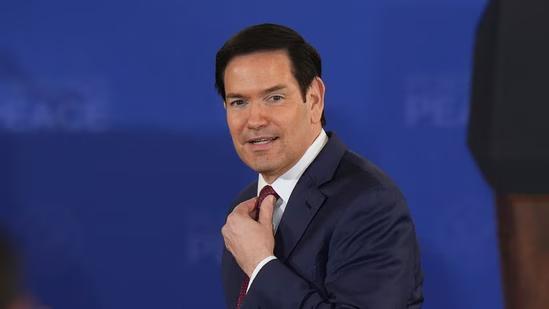
We Keep an Eye on India & Pak Situation Every Single Day: US
The ongoing tensions between India and Pakistan have been a major concern for the international community, and the United States is no exception. In a recent statement, US Secretary of State Marco Rubio emphasized that the US “keeps an eye” on the situation between the two South Asian nations “every single day”. This comes as no surprise, given the fragile nature of the ceasefire agreements between the two countries in the past.
Rubio’s statement was made in the context of the ongoing conflict between Russia and Ukraine, where the US is actively involved in diplomatic efforts to broker a peace deal. While discussing the situation, he highlighted the importance of finding a lasting solution to the conflict, rather than just focusing on temporary ceasefires. “What we’re aiming for is not some permanent ceasefire. What we’re aiming for here is a peace deal,” he said.
The situation between India and Pakistan has been volatile for several years, with both countries accusing each other of cross-border terrorism and military aggression. The most recent escalation occurred in February 2022, when the Indian Air Force launched airstrikes against a Jaish-e-Mohammed (JeM) training camp in Pakistan’s Khyber Pakhtunkhwa province, following a deadly suicide bombing in Jammu and Kashmir. Pakistan responded by shooting down an Indian fighter jet, and the situation remained tense for several days.
The US has traditionally been a key player in mediating conflicts between India and Pakistan, and has played a significant role in promoting dialogue and reducing tensions between the two nations. However, the situation has become increasingly complex over the years, with the involvement of other regional and global powers.
One of the main challenges in resolving the conflict is the lack of trust between India and Pakistan. The two countries have a long history of mistrust and hostility, dating back to the partition of India in 1947. The situation has been exacerbated by the involvement of non-state actors, such as terrorist groups like the JeM and the Lashkar-e-Taiba (LeT), which have carried out numerous attacks on Indian soil.
Another major obstacle to a peaceful resolution is the Kashmir issue. India and Pakistan have been locked in a decades-long dispute over the territory, which is claimed by both countries in its entirety. The issue has been a major flashpoint for violent conflict, with both countries accusing each other of human rights abuses and territorial aggression.
Despite these challenges, the US remains committed to playing a role in resolving the conflict between India and Pakistan. Rubio’s statement is a clear indication of the US’s willingness to engage with both countries and promote dialogue and diplomacy. However, the US has also made it clear that it will not impose a solution on either country, and that any resolution must be negotiated by the parties themselves.
In recent years, the US has taken several steps to promote dialogue and reduce tensions between India and Pakistan. In 2019, the US and Pakistan signed a Memorandum of Understanding (MoU) aimed at promoting economic cooperation and reducing tensions between the two countries. The MoU also included provisions for promoting peace and stability in the region, including the peaceful resolution of the Kashmir issue.
The US has also been working with other regional powers, such as China and the European Union, to promote dialogue and cooperation between India and Pakistan. In 2020, the US, China, and the EU co-hosted a conference on the Kashmir issue, which brought together representatives from both India and Pakistan to discuss the situation.
In conclusion, the situation between India and Pakistan remains a major concern for the international community, and the US is committed to playing a role in resolving the conflict. Rubio’s statement is a clear indication of the US’s willingness to engage with both countries and promote dialogue and diplomacy. However, the challenges are significant, and a lasting solution will require sustained effort and commitment from all parties involved.
Source:



